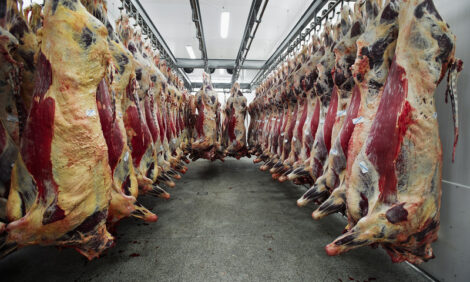



New Analysis Shows BVD-PI Testing Pays – Netting Producers $14 More Per Head
US - For the second consecutive year, research shows cattle buyers are paying a higher premium for calves that test negative for being persistently infected (PI) with bovine viral diarrhea (BVD).According to an analysis of Superior Livestock Auction data of more than 400,000 head marketed during 2013, the average premium paid for BVD-PI Free status calves was $2.97 per hundredweight – a 23 percent increase from the previous year.1,2 Similar to what producers have experienced with premiums paid for value-added vaccination programs, this BVD-PI Free premium translates into more profit per calf – an additional $14 per head on a 600 pound animal.
“What I’ve found looking through data on more than 6.5 million head marketed with Superior Livestock over the past 19 years is that buyers truly appreciate healthy calves backed by information documenting their health status,” says Glenn Rogers, D.V.M, Superior Livestock Auction Consultant. “For example, BVD-PI Free status is one factor that does affect sale price. In 2013, the 1.4 percent of lots of calves identified and sold as BVD-PI Free averaged $2.97 per hundredweight more, creating a really nice return for their owners.”1
Using BVD-PI Testing Results to Add Value
During the past two years, 88 lots of cattle sold through Superior Livestock Auction were marketed as being BVD-PI Free. Sales data for these calves were compared to results from 6,175 other lots.
In 2013, the 47 lots identified as being BVD PI Free brought a $2.97-per-hundredweight premium compared to non-BVD-PI tested cattle. For a 600-pound calf, this meant a $17.82 advantage. After subtracting the testing costs, producers netted at least $14 per head.
This shows a year-on-year increase of $3.30 per 600-pound calf — real-world data that confirms buyers recognize the benefits BVD-PI Free status and are willing to pay more money for this value-added benefit. BVD-PI testing is about adding value to calves. Netting an additional $14 or more on a 600-pound calf that is documented to be BVD-PI negative makes it well worth the investment.
Determining BVD-PI Status Quickly
Leading laboratories, such as the Kansas State Veterinary Diagnostic Laboratory (KSVDL), offer an advanced method for BVD-PI testing that uses Life Technologies’ real-time polymerase chain reaction (PCR) technology — VetMAX-Gold BVDV PI Detection Kit. This diagnostic approach provides additional assurance by featuring the only real-time PCR detection kit approved by the U.S. Department of Agriculture to identify BVD-PI status.
“KSVDL provides diagnostic guidance veterinarians can use to help their producer-clients prevent and control BVDV,” says Gregg Hanzlicek, D.V.M., Ph.D., director, KSVDL Production Animal Field Investigations. “News that research shows buyers are willing to pay more for calves that test negative for BVD-PI is important information. This documentation helps producers add value to their calves resulting in their buyers seeing better health and performance from the calves they purchase as BVD-PI Free.”
Making BVD-PI Testing Easy
Getting started with BVD-PI testing is easy. Producers work with their veterinarians to identify the testing laboratory to which samples are sent for processing. Most labs will provide sample-collection supplies, such as an ear notcher and sample vials.
Simply collect an ear notch from each animal, placing the sample in its own identified vial. Sometimes labs offer special, low-cost shipping options. Testing results should be available within 24 hours of the lab receiving samples for BVD-PI testing.
1The effects of health and management programs on the sale price of beef calves marketed through eight Superior Livestock video auctions in 2013. Final Report, Superior Livestock.2King, M.E. 2012. The effects of health and management programs on the sale price of beef calves marketed through six Superior Livestock video auctions in 2012. Final Report, Pfizer Inc.TheCattleSite News Desk



